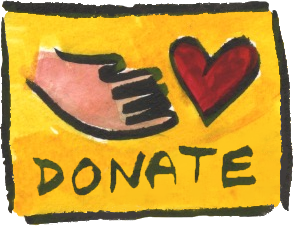In the initial standing steps, when asked about your eye movements, “How do they cross the horizon?” may be unclear for some. What I mean is, how do your eyes travel along the horizon, looking around yourself, surveying the horizon.
When lying on your side, the floor side arm is always resting, extended out in front of you at the height of your shoulder, palm facing the ceiling. There are no movement instructions given for this arm.
This lesson was recorded in a short workshop called Free Your Spine, which included a lot of newcomers to Feldenkrais. As you settle into the back-lying rest after the lesson begins in standing, you’ll hear a reference about coming into the world of sensations after an intellectual discussion. Since there’s a few references to that discussion, here’s a summary:
I first explained that the Feldenkrais Method is about learning to learn, and that while we were in a group exercise studio where usually our bodies and muscle fibers are challenged so that they improve (as in cardio, strength, or stretch training), we were instead about to challenge our attention so we could better learn from our experience.
I then asked the students what the prerequisites or ingredients of learning are. Here’s the list they developed:
- ease
- curiosity
- interest
- attention
- being present
- safety
We focused on curiosity and said we have to generate an interest, an attention, an honest curiosity about the present moment if we’re going to fully experience it, and give it a chance to wire our brains differently.
We talked about conditions for curiosity and said they included safety, comfort and ease, and an effortlessness, almost child-like quality of exploring the self and the environment.
We talked about how in most classes in the group exercise studio we were in, and many other situations in life, we feel rewarded for our effort, for a sense of trying hard. We may even feel like the reward is about the effort, or like we’re being watched (or watching ourselves) to see if we look like we’re trying hard enough.
Instead, we said, we’d see what would happen if we cultivated a lazy, effortless sense of exploration during our hour together.
This lesson is found in Patron Treasures, our exclusive collection of lessons for Feldenkrais Project Patron-level donors.
It also appears in our Deep Dive course called Shoulder Cloak, Rib Basket, Sliding Sternum.
This lesson was recorded in a workshop I called Free Your Spine. More context in the Curiosities tab.
Members and Patrons. Learn more or login:
Members and Patrons. Learn more or login:




Love how you pull us all together using our eyes to guide our movements and give a breath of fresh air to our nervous systems!
The effect of this lesson on my gaze and posture was amazing. At the beginning of the lesson my gaze was below the horizon line. At the end, my whole posture was improved. Head higher, shoulders straightened and my gaze was right at the horizon. The reach of my gaze was almost 360 when turning right and left. Thank you!
Beautiful!
Every lesson I do I feel my whole body becoming more integrated.
This loosened and increased my range of motion in upper back…much needed